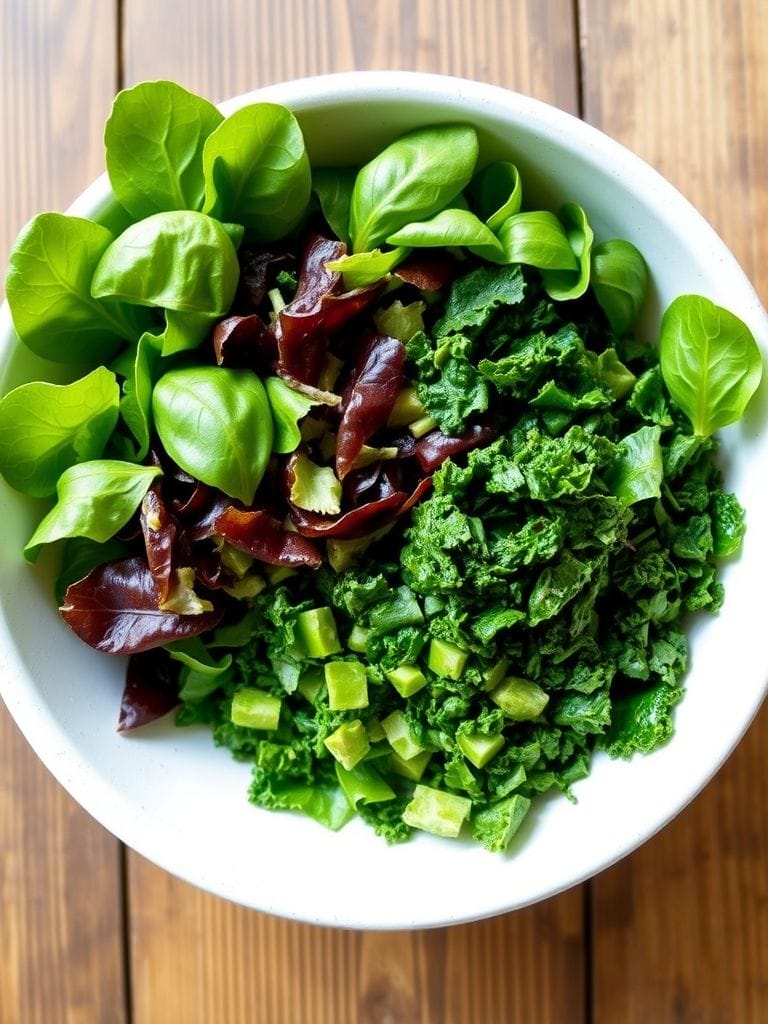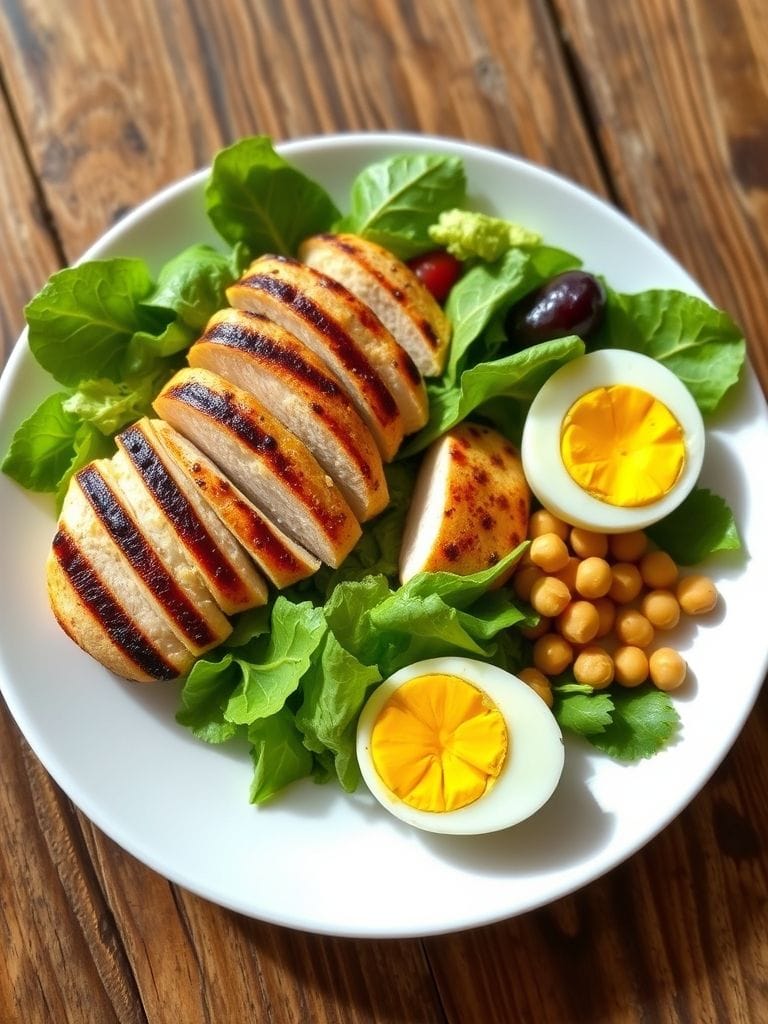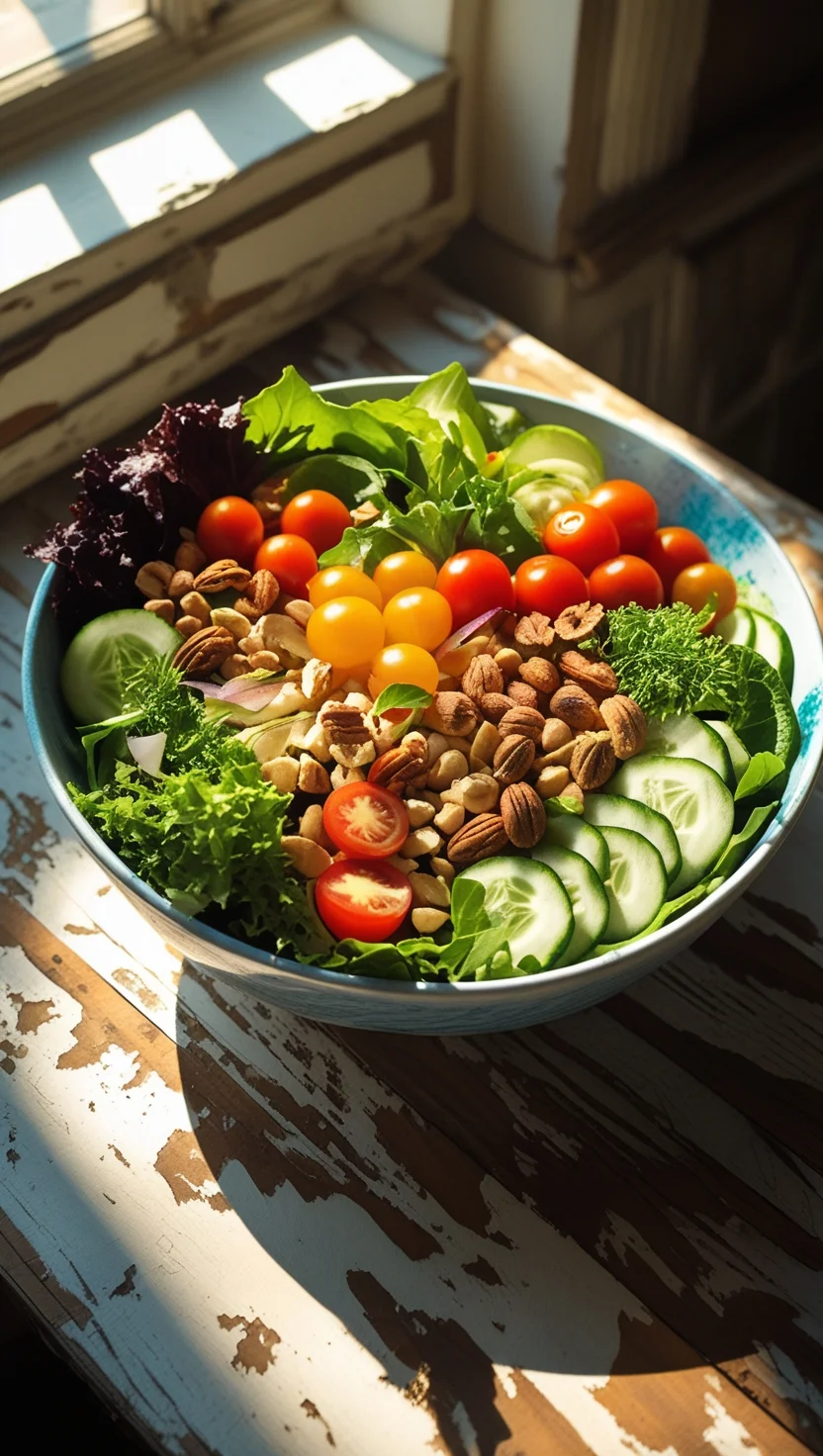Introduction
Did you know that people who eat salads regularly consume 23% more vegetables per day than those who don’t? This surprising statistic challenges the common belief that salads are just boring side dishes. In reality, well-crafted salads can be nutritional powerhouses, satisfying meals, and culinary masterpieces that tantalize your taste buds. Whether you’re looking to boost your health, lose weight, or simply add more variety to your meals, mastering the art of salad-making is one of the most valuable skills you can develop in the kitchen. From vibrant Mediterranean combinations to hearty grain-based bowls, salads offer endless possibilities for creativity and nutrition.
Table of Contents
Ingredients List
Creating the perfect salad requires a thoughtful selection of fresh, high-quality ingredients that work harmoniously together:
Base Greens (Choose 2-3):

- 4 cups fresh spinach leaves (substitute: arugula for a peppery kick)
- 2 cups mixed baby lettuce (substitute: romaine for extra crunch)
- 1 cup kale, massaged and chopped (substitute: Swiss chard for milder flavor)
Protein Components:

- 6 oz grilled chicken breast, sliced (substitute: chickpeas or quinoa for vegetarian option)
- 2 hard-boiled eggs, halved (substitute: hemp seeds for vegan protein)
Colorful Vegetables:

- 1 cup cherry tomatoes, halved (substitute: roasted red peppers)
- 1 medium cucumber, diced (substitute: celery for different texture)
- 1/2 red onion, thinly sliced (substitute: green onions for milder taste)
- 1 medium avocado, cubed (substitute: olives for healthy fats)
Flavor Enhancers:
- 1/4 cup toasted nuts or seeds (substitute: dried cranberries for sweetness)
- 2 tablespoons fresh herbs like basil or cilantro
- 2 oz crumbled feta cheese (substitute: nutritional yeast for dairy-free option)
Timing
The beauty of salads lies in their efficiency and convenience. Total preparation time typically ranges from 15-20 minutes, which is 60% faster than most cooked meals. Here’s the breakdown:
- Prep time: 12-15 minutes for washing, chopping, and assembling ingredients
- Cooking time: 3-5 minutes if including proteins like hard-boiled eggs or grilled elements
- Assembly time: 2-3 minutes for combining and dressing
- Total time: 15-20 minutes maximum
This quick turnaround makes salads perfect for busy weeknights, meal prep sessions, or when you need a nutritious meal without extensive cooking.
Step-by-Step Instructions
Step 1: Prepare Your Greens Foundation
Start by thoroughly washing your chosen greens under cold running water. Pat them completely dry using a salad spinner or clean kitchen towels. Tear larger leaves into bite-sized pieces, ensuring each piece is roughly uniform for even flavor distribution. This foundational step determines the texture and freshness of your entire salad.
Step 2: Create Your Protein Base
If using cooked proteins like chicken, ensure they’re properly seasoned and at room temperature for optimal flavor release. For plant-based options, drain and rinse canned beans thoroughly to remove excess sodium. Cut proteins into consistent, fork-friendly pieces that complement rather than overpower the delicate greens.
Step 3: Prepare Colorful Vegetables
Dice vegetables into similar-sized pieces to ensure each bite contains a balanced mix of flavors and textures. Keep cut avocados until the last moment and toss with a small amount of lemon juice to prevent browning. This technique maintains visual appeal and prevents oxidation.
Step 4: Toast Your Nuts and Seeds
Heat a dry skillet over medium heat and toast nuts or seeds for 2-3 minutes until fragrant and lightly golden. This simple step amplifies their flavor and adds an irresistible crunch that elevates the entire salad experience.
Step 5: Master the Assembly Technique
Layer ingredients strategically in your serving bowl: start with heartier greens at the bottom, add proteins and heavier vegetables in the middle, and finish with delicate ingredients like herbs and cheese on top. This prevents wilting and maintains structural integrity.
Step 6: Dress for Success
Add dressing just before serving, using about 1-2 tablespoons per serving. Toss gently with clean hands or salad tongs, ensuring every ingredient is lightly coated without drowning the delicate leaves.
Nutritional Information
A well-balanced salad provides exceptional nutritional value while keeping calories in check:
- Calories: 320-450 per serving (depending on protein and dressing choices)
- Protein: 25-30g (supporting muscle maintenance and satiety)
- Fiber: 8-12g (promoting digestive health and fullness)
- Healthy fats: 12-18g (from avocado, nuts, and olive oil-based dressings)
- Vitamins: High in vitamins A, C, K, and folate
- Minerals: Excellent source of potassium, magnesium, and iron
- Antioxidants: Rich in carotenoids, flavonoids, and polyphenols
Studies show that people who eat salads regularly have higher levels of vitamin C, vitamin E, and beta-carotene in their blood, contributing to better immune function and cellular protection.
Healthier Alternatives for the Recipe
Transform your salads into even more nutritious powerhouses with these smart substitutions:
Boost Fiber Content: Replace traditional lettuce with nutrient-dense options like baby spinach, kale, or arugula, which contain up to 300% more vitamins and minerals.
Enhance Protein Quality: Swap conventional proteins for plant-based alternatives like hemp hearts, which provide complete amino acid profiles, or tempeh for gut-healthy probiotics.
Upgrade Your Fats: Instead of cheese, incorporate omega-3 rich ingredients like walnuts, chia seeds, or a tablespoon of ground flaxseed to support heart and brain health.
Reduce Sodium: Make your own dressings using fresh herbs, citrus juice, and high-quality olive oil instead of store-bought versions that often contain excessive sodium and preservatives.
Add Probiotic Elements: Include fermented vegetables like sauerkraut or kimchi to support digestive health and boost your salad’s beneficial bacteria content.
Serving Suggestions
Elevate your salad presentation and enjoyment with these creative serving ideas:
Mediterranean Style: Serve alongside warm pita bread and hummus, creating a complete meal that satisfies both texture and flavor cravings.
Asian Fusion: Accompany with brown rice or quinoa and a sesame-ginger dressing for an internationally-inspired bowl that combines familiar and exotic flavors.
Brunch Presentation: Top with a perfectly poached egg and serve with avocado toast for a Instagram-worthy meal that’s both nutritious and visually stunning.
Family Style: Present in a large wooden bowl with multiple dressing options on the side, allowing family members to customize their portions according to personal preferences.
Meal Prep Containers: Divide into glass containers with dressing stored separately for grab-and-go convenience throughout the week.
Common Mistakes to Avoid
Even experienced cooks can fall into these salad-making traps:
Over-dressing: Using too much dressing masks the natural flavors of fresh ingredients and adds unnecessary calories. Research shows that people typically use 40% more dressing than needed.
Improper Storage: Adding dressing too early causes greens to wilt and become soggy. Always dress salads immediately before serving for optimal texture and appearance.
Ignoring Temperature: Serving ingredients at different temperatures creates an unpleasant eating experience. Allow refrigerated proteins to come to room temperature before adding to fresh greens.
Monotonous Textures: Including only soft or only crunchy ingredients creates boring salads. Aim for a variety of textures in every bite for maximum satisfaction.
Seasonal Ignorance: Using out-of-season produce results in bland, expensive salads. Choose ingredients that are currently in peak season for best flavor and value.
Storing Tips for the Recipe
Maximize freshness and extend the life of your salad ingredients with these professional storage techniques:
Greens Storage: Wash and thoroughly dry greens, then store in airtight containers lined with paper towels. This method can extend freshness by up to 5 days compared to traditional storage methods.
Prepared Components: Store chopped vegetables in separate containers to prevent cross-contamination of flavors and moisture levels. Hard vegetables like carrots can be stored for up to a week, while softer items like tomatoes are best used within 2-3 days.
Dressing Separation: Always store dressings separately from assembled salads. Homemade dressings typically last 3-5 days refrigerated, while oil-based versions can last up to a week.
Meal Prep Strategy: Prepare ingredients on Sunday for the entire week, storing each component separately and assembling fresh salads daily for optimal taste and nutrition.
Freezing Options: While complete salads don’t freeze well, you can freeze proteins like cooked chicken or beans in portion-sized containers for quick salad additions.
Conclusion
Mastering the art of salad creation transforms your approach to healthy eating by combining nutrition, convenience, and incredible flavor. These versatile dishes provide essential vitamins, minerals, and fiber while offering endless customization possibilities. From selecting the freshest ingredients to perfecting your assembly technique, every step contributes to creating satisfying meals that nourish your body and delight your senses.
Ready to revolutionize your meal routine? Try this recipe today and share your creative variations in the review section below. Don’t forget to subscribe to our blog for more nutritious recipes and cooking tips that make healthy eating both simple and delicious!
FAQs
Q: How long can I store prepared salads in the refrigerator? A: Undressed salads can be stored for 3-5 days when properly stored in airtight containers. However, dressed salads should be consumed within 24 hours to maintain optimal texture and prevent wilting.
Q: What’s the best way to keep salads fresh for meal prep? A: Store each component separately in airtight containers and assemble fresh salads daily. Keep dressings in small containers and add just before eating to prevent sogginess.
Q: Can I make salads more filling without adding too many calories? A: Absolutely! Add high-fiber ingredients like beans, quinoa, or chia seeds, which increase satiety without significantly increasing calories. Protein-rich additions like hard-boiled eggs or chickpeas also help you feel fuller longer.
Q: How do I prevent my avocados from browning in prepared salads? A: Toss cut avocados with fresh lemon or lime juice immediately after cutting. The citric acid prevents oxidation and browning for several hours.
Q: What are the most nutritious salad greens I should choose? A: Dark, leafy greens like spinach, kale, and arugula provide the most nutrients per calorie. These greens contain higher levels of vitamins A, C, and K compared to lighter lettuces like iceberg.
